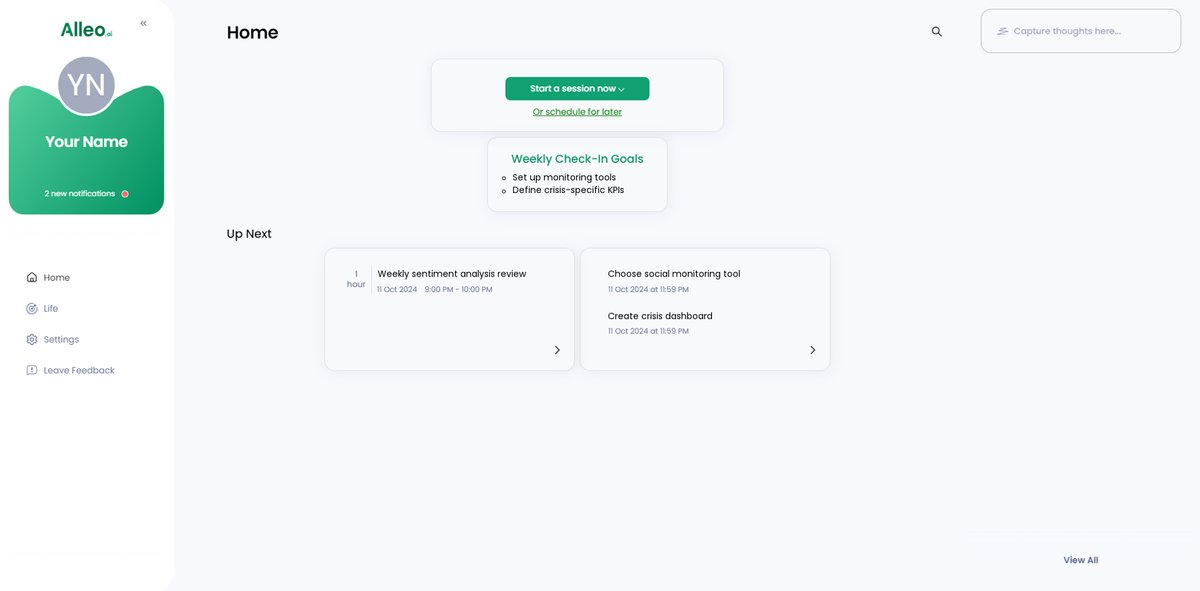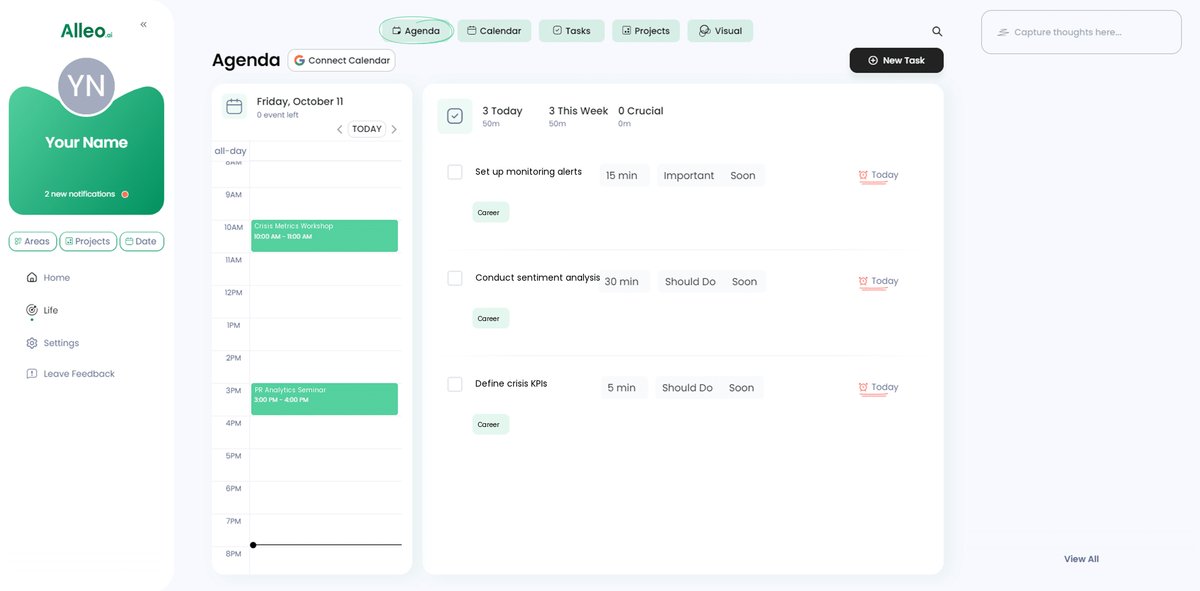How PR Professionals Can Measure Crisis Communication Effectiveness in 4 Steps
Are you struggling to prove the value of your crisis communication efforts to stakeholders? Measuring crisis communication effectiveness is crucial for demonstrating ROI and improving your strategies.
As a life coach, I’ve helped many professionals navigate these challenges. In my experience, implementing data-driven metrics can make a significant difference in evaluating PR crisis response and measuring public perception during crises.
In this article, you’ll discover actionable strategies to measure the effectiveness of your crisis communication. We’ll explore tools like real-time social media monitoring, sentiment analysis, and AI-driven analytics for assessing media coverage and stakeholder feedback measurement.
Let’s dive into crisis management metrics and communication effectiveness KPIs.

Understanding the Challenges of Measuring Crisis Communication Effectiveness
Many PR professionals face difficulties in quantifying the impact of their crisis communications. Stakeholders often demand measurable results, which adds immense pressure when evaluating PR crisis response.
Traditional PR metrics, like media clippings and mentions, fall short in demonstrating true value for measuring crisis communication effectiveness.
I frequently see clients struggle with outdated metrics. These metrics don’t capture the nuanced impact of their efforts in crisis management.
You need more advanced, data-driven approaches for measuring public perception during crises.
In my experience, relying on vanity metrics can lead to frustration. PR professionals must adopt real-time monitoring and AI-driven analytics, including social media sentiment analysis in PR crises.
This shift is crucial for showcasing the effectiveness of crisis communication efforts and determining crisis communication ROI.
Several clients report success after implementing these strategies. They can now provide clear, quantifiable results to stakeholders using communication effectiveness KPIs.
This makes a significant difference in their professional lives.
Ready to dive deeper?
Let’s explore actionable steps to overcome these challenges in measuring crisis communication effectiveness.

Roadmap to Measuring Crisis Communication Effectiveness
Overcoming this challenge of measuring crisis communication effectiveness requires a few key actions. Here are the main areas to focus on to make progress in evaluating PR crisis response.
- Implement real-time social media monitoring tools: Choose tools that offer real-time monitoring and integrate with existing PR software for measuring public perception during crises.
- Conduct pre and post-crisis sentiment analysis: Perform baseline social media sentiment analysis in PR crises and track changes during and after the crisis.
- Use AI-driven analytics for audience segmentation: Segment audiences based on engagement and sentiment data to tailor communication strategies and assess crisis communication ROI.
- Create crisis-specific KPIs and measurement plans: Define clear communication effectiveness KPIs aligned with organizational goals and develop a comprehensive measurement plan for crisis management metrics.
Let’s dive into these strategies for measuring crisis communication effectiveness!
1: Implement real-time social media monitoring tools
Implementing real-time social media monitoring tools is essential for measuring crisis communication effectiveness and ensuring effective crisis management.
Actionable Steps:
- Choose a reliable social media monitoring tool such as Sprinklr or Brand24. Select one that offers real-time monitoring and integrates with existing PR software for crisis response evaluation.
- Set up real-time alerts for crisis-related keywords. Define and monitor a list of relevant keywords and phrases to track their frequency and context, aiding in measuring public perception during crises.
- Create a dashboard to visualize real-time data. Customize it to display key metrics like social media sentiment analysis in PR crises and message penetration, generating weekly reports on communication effectiveness KPIs.
Key benefits of real-time monitoring include:
- Instant detection of emerging issues
- Quick response to negative sentiment
- Ability to track conversation trends and measure crisis communication effectiveness
Explanation:
These steps are crucial because they enable you to track and respond to a crisis in real-time. Real-time monitoring tools help you gauge public sentiment and adjust your communication strategy accordingly, contributing to crisis communication ROI.
For more insights, check out Brand24’s guide on PR crisis management. This proactive approach ensures you stay ahead of the crisis, maintaining control over the narrative and improving crisis response time evaluation.
This foundation sets the stage for more advanced techniques like sentiment analysis and AI-driven audience segmentation, further enhancing your ability to measure crisis communication effectiveness.

2: Conduct pre and post-crisis sentiment analysis
Analyzing sentiment before and after a crisis is essential for measuring crisis communication effectiveness and understanding the impact of your communication efforts.
Actionable Steps:
- Perform a baseline sentiment analysis before a crisis occurs. Use social media sentiment analysis tools to assess the current public perception of the brand.
- Conduct ongoing sentiment analysis during the crisis. Regularly update sentiment scores to track changes in real-time, a key aspect of crisis management metrics.
- Analyze post-crisis sentiment to assess recovery. Measure sentiment scores after the crisis resolution to identify trends and improvements, crucial for reputation recovery metrics.
Explanation:
These steps are crucial because they help you understand how public perception shifts throughout a crisis. By comparing pre-crisis and post-crisis sentiment, you can evaluate the effectiveness of your communication strategies and PR crisis response.
This approach ensures you have concrete data to demonstrate your impact. For further insights on measuring crisis communication effectiveness, check out Brand24’s guide on PR crisis management.
This comprehensive analysis provides a clear picture of your crisis management success and helps in assessing communication effectiveness KPIs.
Implementing these steps will give you a solid foundation for measuring the true impact of your crisis communications and evaluating your crisis response time.
3: Use AI-driven analytics for audience segmentation
Using AI-driven analytics for audience segmentation is crucial for tailoring your crisis communication strategies effectively and measuring crisis communication effectiveness.
Actionable Steps:
- Implement AI tools to segment audiences. Use these tools to categorize audiences based on engagement and sentiment data, enabling social media sentiment analysis in PR crises.
- Tailor communication strategies for different segments. Develop customized messages for each segment by analyzing their unique needs and concerns, enhancing crisis management metrics.
- Leverage predictive analytics to anticipate reactions. Use AI to predict potential audience responses and adjust your strategies accordingly, improving PR crisis response evaluation.
AI-driven analytics offer several advantages:
- More precise audience targeting
- Personalized communication strategies
- Data-driven decision making for measuring public perception during crises
Explanation:
These steps are vital because they allow you to create more personalized and effective communication strategies during a crisis. By segmenting your audience, you can address specific concerns and improve engagement, which is key to measuring crisis communication effectiveness.
For example, check out Sprinklr’s insights on AI in communications. This approach ensures that your crisis communication is not only reactive but also anticipatory, enhancing overall effectiveness and providing valuable communication effectiveness KPIs.
Next, let’s explore how to create crisis-specific KPIs and measurement plans.

4: Create crisis-specific KPIs and measurement plans
Creating crisis-specific KPIs and measurement plans is essential for measuring crisis communication effectiveness and ensuring your efforts align with organizational goals.
Actionable Steps:
- Define clear, crisis-specific KPIs. Identify key crisis management metrics such as message penetration, sentiment change, and engagement rates.
- Develop a comprehensive measurement plan. Outline the tools and processes for tracking and reporting these KPIs, including media coverage assessment tools.
- Regularly review and adjust KPIs. Use performance insights to refine KPIs and improve measurement accuracy for PR crisis response evaluation.
Essential components of a crisis measurement plan:
- Clearly defined metrics and goals for measuring crisis communication effectiveness
- Regular reporting schedules
- Feedback loops for continuous improvement, including stakeholder feedback measurement
Explanation:
These steps matter because they enable you to quantify the impact of your crisis communication efforts effectively. By setting clear communication effectiveness KPIs and regularly reviewing them, you ensure alignment with organizational goals and can evaluate crisis response time.
For additional insights, refer to Prowly’s guide on PR KPIs. This practice not only proves the value of your work but also helps in continuous improvement of your crisis communication ROI.
Following these steps will provide a robust framework for measuring your crisis communication success and assessing public perception during crises.

Enhance Your Crisis Communication with Alleo
We’ve explored the challenges of measuring crisis communication effectiveness. But did you know you can work directly with Alleo to make this journey easier and faster?
With Alleo, setting up an account is quick and easy. Create a personalized plan tailored to your specific crisis communication needs, including crisis management metrics and PR crisis response evaluation.
Alleo’s AI coach will provide full coaching sessions, just like a human coach, helping you with measuring public perception during crises and social media sentiment analysis in PR crises.
You’ll receive affordable, tailored support to implement data-driven metrics for measuring crisis communication effectiveness. Alleo keeps you accountable with text and push notifications, ensuring you stay on track with your communication effectiveness KPIs and crisis communication ROI.
Ready to get started for free? Let me show you how to improve your crisis response time evaluation and reputation recovery metrics!
Step 1: Log In or Create Your Account
To start measuring your crisis communication effectiveness, log in to your Alleo account or create a new one if you’re a first-time user.

Step 2: Choose “Building better habits and routines”
Click on “Building better habits and routines” to develop consistent crisis communication practices, enabling you to respond more effectively and measure your efforts with greater precision.

Step 3: Select “Career” as Your Focus Area
Choose “Career” as your focus area in Alleo to address your crisis communication challenges and improve your professional skills in measuring and demonstrating PR effectiveness.

Step 4: Starting a coaching session
Begin your journey with Alleo by scheduling an intake session to set up your personalized crisis communication measurement plan and receive guidance on implementing the strategies discussed in the article.

Step 5: Viewing and Managing Goals After the Session
After your coaching session, check the Alleo app’s home page to review and manage the crisis communication goals you discussed, allowing you to track your progress and adjust strategies as needed.

Step 6: Adding events to your calendar or app
Track your progress in implementing crisis communication strategies by adding key milestones and tasks to the Alleo app’s calendar and task features, helping you stay organized and accountable throughout the process.

Putting It All Together for Effective Crisis Communication
By now, we’ve covered the key steps to measure crisis communication effectiveness. We’ve discussed real-time monitoring, social media sentiment analysis in PR crises, AI-driven segmentation, and creating crisis-specific KPIs for communication effectiveness.
Each step is essential for demonstrating the value of your PR efforts and evaluating PR crisis response.
I understand the challenges you face. Measuring crisis communication effectiveness and your impact can be tough.
But with these strategies, you can show clear, quantifiable results using crisis management metrics.
Remember, you don’t have to do this alone. Alleo can help you implement these steps seamlessly, including stakeholder feedback measurement and media coverage assessment tools.
Our AI coach is here to support you every step of the way in measuring public perception during crises.
So, start today. Begin your journey towards more effective crisis communication and improving your crisis response time evaluation.
Try Alleo for free and see the difference in your crisis communication ROI. You’ve got this!